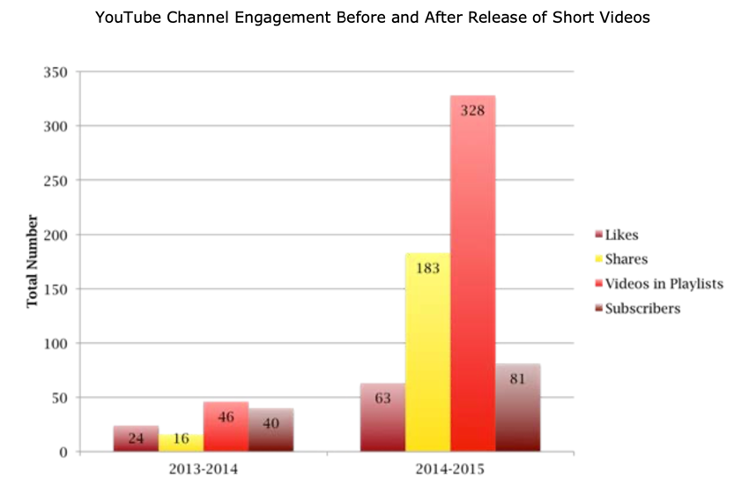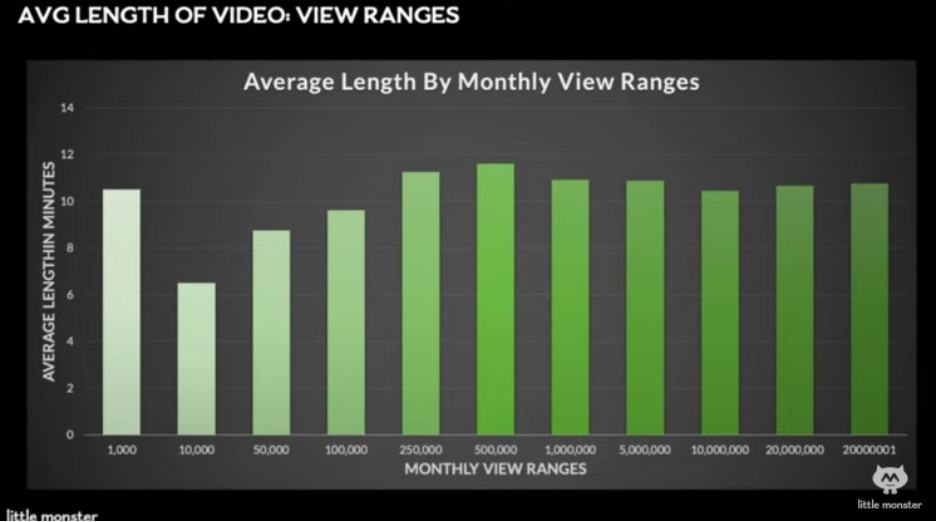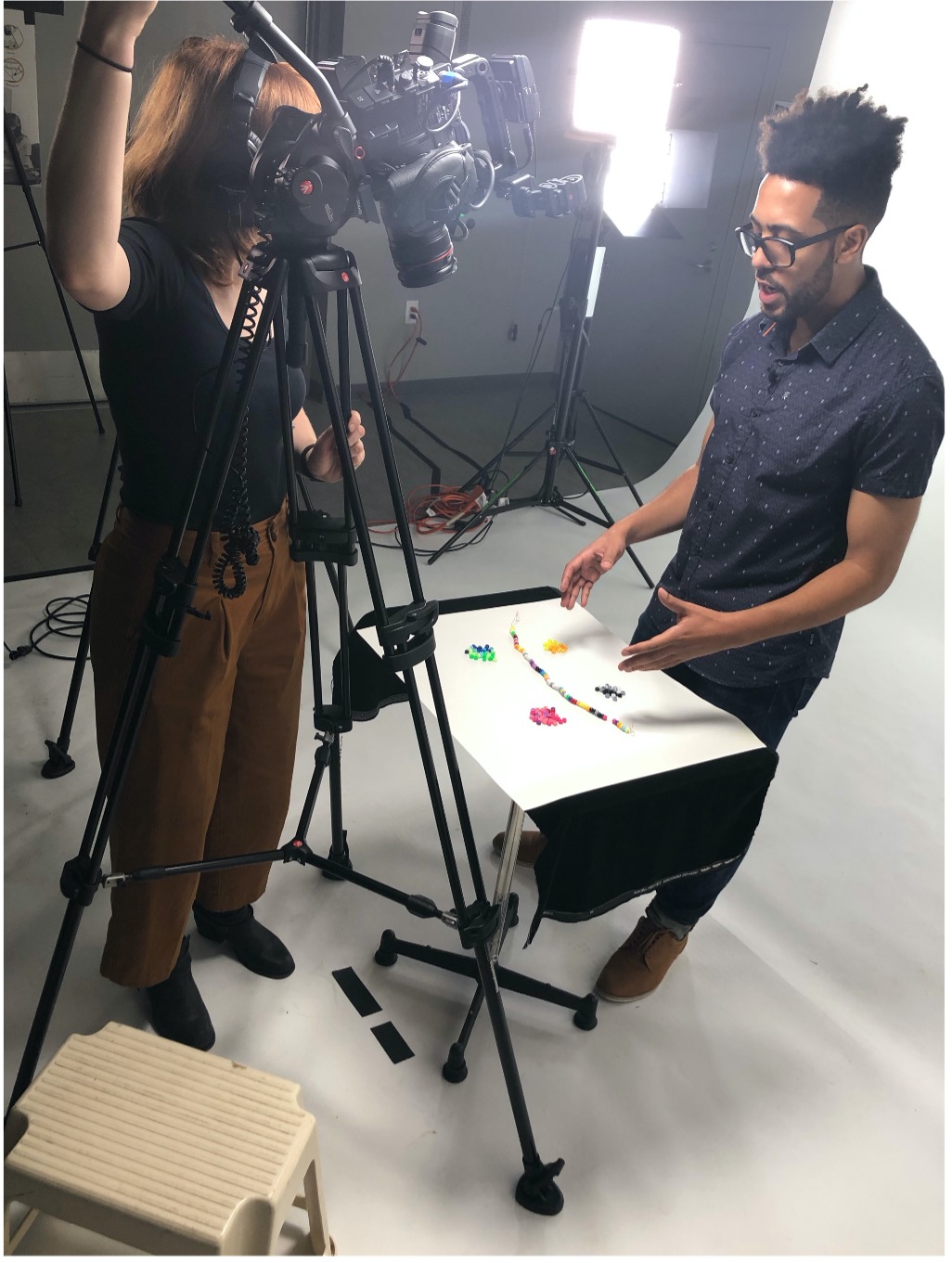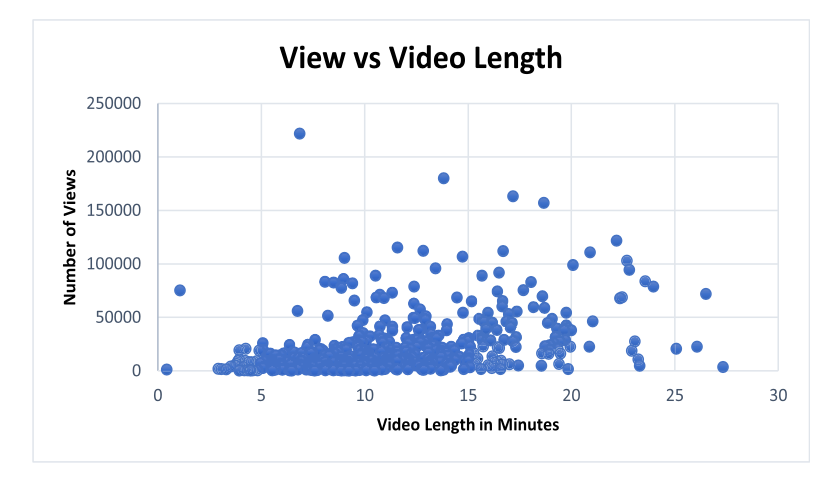Post videos that are shorter than lecture length.
The Langworthy study (2017) found that posting shorter videos on the measured YouTube channel increased not only views across the channel in its entirety (increase of 180%), but watch times as a percentage of the video, subscribes, and likes as well. It’s important to note here that “short” videos in this study are defined as 5-8 minutes, and those videos are being compared to longer lecture-style videos up to 3 hours in length that the channel had been uploading in the past. The data set is small (with only 6 of the new style 5-8-minute videos posted), but still impressive in the difference on watch time and engagement.
These findings (Langworthy, 2017) tell us that shorter video can perform better on YouTube as opposed to longer video with the same content. We may reasonably conclude that educational videos on the YouTube platform should be shorter than these lecture-style videos that are up to 3 hours in length.

From research, some lengths to try would be a 5-8-minute video (Langworthy, 2017), a 10-12-minute video (Gielen, 2019), or a 20-25-minute video (Saurabh, Gautam, 2019).
Saurabh’s study notes that educational videos should be “long enough to cover the content but … short enough to maintain the interest of its audience” (Saurabh, Gautam, 2019, p. 151). There’s a lot of wiggle room here to think about what length of video to post! For example, a lifelong learner audience who is prepared for educational content might be willing to watch a 15-minute video, whereas someone searching for a quick answer or explainer might only be willing to commit to 3 minutes.
One of the biggest takeaways for me in Gielen’s research: “If you want to grow on YouTube… you have to be uploading longer content” (Gielen, 2019, Aug 21). Content that is 10-12 minutes in length is doing very well on YouTube right now. In higher ed and marketing especially, we’ve been told for years that anything over some arbitrary length, like 3 minutes, won’t get any views. This data shows that this is no longer the case (if it ever was).

Create content with a specific length in mind.
In her research, Langworthy (2017) is creating short videos from longer lecture-length lecture-style videos, so the content itself is very similar, and only the length has been modified. Both styles of videos are educational in nature and are delivered lecture-style to the audiences. One problem that Langworthy cites is that it takes the team a long time (up to 60 hours) to cut down a long lecture video (sometimes up to 3 hours long) into a shorter video. All of the short videos in her study have been cut down from the longer lecture-length videos.
We might eliminate this problem by creating content that is specifically meant to be shorter, rather than modifying long content into short content. While this may require more work on the front end prepping the faculty member to deliver something in a shorter amount of time, it would save on post-production work.
Recording video specifically meant for shorter-than-lecture-length also allows formatting changes in the video. Rather than a classroom set-up, lecturers can be placed instead on a green screen or in front of a backdrop, allowing the opportunity for more interesting work in the post-filming production process, like animations or text call-outs.
Some tips to keep in mind when working with faculty members on shorter length content:
- Give them a time limit to aim for and make it clear that you only want them to speak about the content for that amount of time.
- Have them practice at home with a timer.
- Film with multiple cameras so that you can make cuts easily if some content needs to be trimmed.
- Filming with multiple cameras also allows the faculty member to do shorter takes, referring to their notes or outline in between takes.
- A teleprompter may be used, depending on the comfort level of the faculty member, but filming without a teleprompter will give you a more natural, less stiff feel.
- Be sure to have the faculty member pause at the end of takes to give your video editor enough room to make the cuts.
- If you are filming on a green screen or other single-color background, be sure to tell the faculty member not to wear green (or white or black or whatever your background color is) for filming.

© Sonja Likness
Post some videos that are longer than 10 minutes in length.
It’s a common thought in higher education YouTube video creation that viewers will not watch a video over some arbitrary cited length, like 3 minutes or sometimes 6 minutes. I’ve long suspected that this is not the case, since my students (ages 18-22) upload videos longer than 6 minutes on their student-branded YouTube channel regularly, and the videos do really well. We now have evidence that this is the case across YouTube.
According to Gielen (2019), videos that are longer than 10 minutes can do very well on YouTube, and channels with large numbers of subscribers are uploading videos 10-12 minutes in length.
Gielen theorizes that the over 10-minute length on a video (which also allows for mid-roll advertisements in YouTube), somehow makes YouTube’s algorithm more likely to show the video in search results and suggested videos. It may also affect the psychology of viewers: Watching a 10:11 video somehow seems less time-consuming than watching a 9:39 video.
The Creator Studio Guide (“Starting an educational channel,” 2020) notes the importance of experimenting with different lengths of video and then checking the analytics to see which length of video performs best. The percentage viewed metric in YouTube Analytics can give channel owners a good idea of where viewers are dropping off on videos, and whether there might be an ideal length of video for that audience.
From research, we might suggest starting with a 5-8-minute video (Langworthy, 2017), a 10-12-minute video (Gielen, 2019), or a 20-25-minute video (Saurabh, Gautam, 2019).

What kind of content might work for one of these mid-length or longform videos? Educational content often works well here. If a learner expects to sit down and take a deep dive into some subject matter, they’re going to be more willing to sit through 10 or 15 minutes than if they’re just searching for a quick answer or a bit of entertainment.